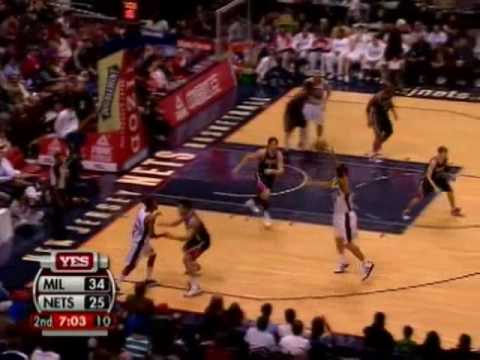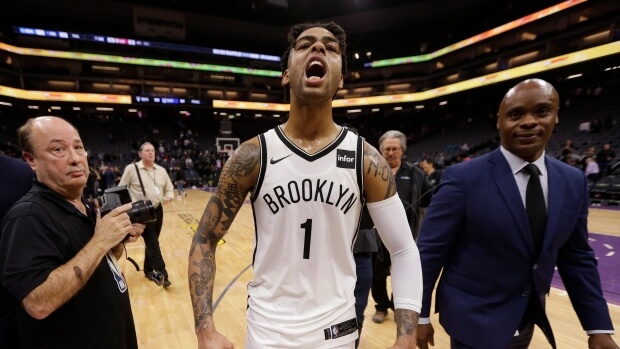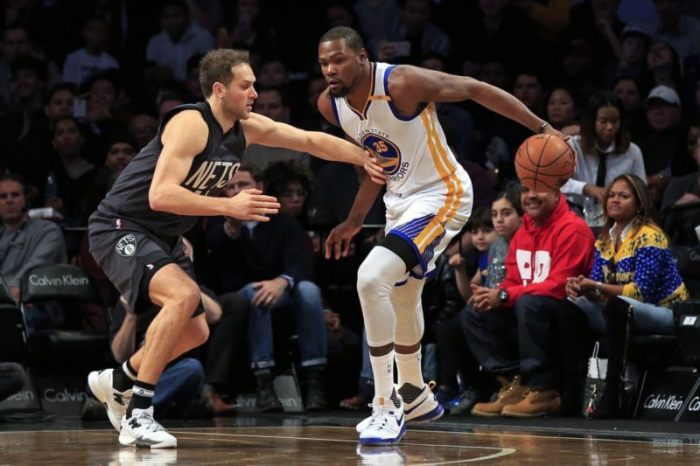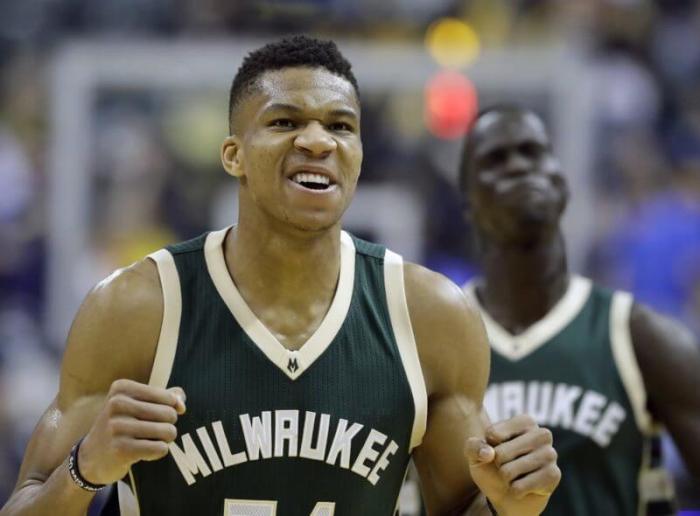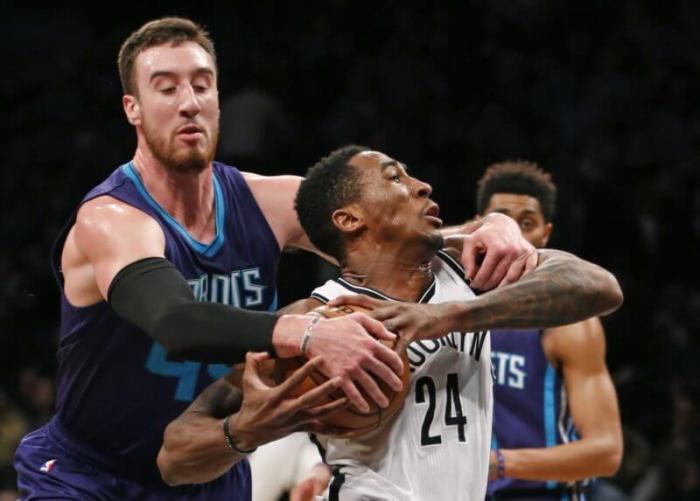On Sunday, Dave D’Alessandro wrote some very interesting stuff about the Nets, and their search for an offensive identity:
But one of the emerging problems is their lack of an identity at the offensive end, particularly since point guard Devin Harris has returned from injury and Kiki Vandeweghe has taken over as head coach.
It was funny though, because I was working on a post about the Nets and a few new wrinkles they had on offense. What I have been noticing is that the Nets have been running the pick and roll less and less. Even though they aren’t really good at running it, it was still their bread and butter (sounds silly I know). As they continue to shy away from the pick and roll, the Nets are starting to run some new stuff, and some of it seems to be working pretty well. After last night’s game against Milwaukee (don’t get me started), I feel like there is enough of a sample size to look at some sets that the Nets have been running, and to see which one is their new, “bread and butter” offense. A offense they can go to whenever they need a bucket, whether it be early or late.
Believe it or not, the Nets have been somewhat successful on offense since Kiki took over, and I think part of it has to do with the offensive stuff the Nets are running. Specifically, they have been running three different sets, and we are going to take a look at each of them today, and rate them using a pretty awesome new scale (more on that later). In the end, all of these three plays combined can be the Nets’ go to offense. They don’t use the pick and roll anymore, but if they give defenses a healthy dose of these plays, they will be successful.
Give & Go With Brook
This is one way the Nets decided to take advantage of all the double teams that Brook Lopez gets. Anytime Brook gets the ball on the block or the high post, the Nets run a cutter right off of him, and Brook has the option to hand it off (or pass if he makes the catch at the top of the key), or make his move:

Here, Keyon Dooling has the ball on the wing, and he is going to dump it into Brook Lopez (dashed yellow line). He is then going to get off of Brook’s left shoulder and either get the ball or continue to cut through.

Before the ball even gets to Brook Lopez, Corey Brewer is already looking at Brook. Dooling notices this, and he starts his cut.

Because Brewer was peeking at Brook, Keyon Dooling was able to get a lot some separation on his cut. This is Brook’s key, if Dooling gets this much separation, Brook hands it off. If Brewer was right on Dooling’s hip, Brook would fake the hand-off and then make his post move, since there is no double team anymore. This also forces Al Jefferson into a tough decision (he is covering Brook Lopez). Does he help off Brook to hedge on Dooling’s cut, or does he stand pat and cover Brook straight up? No matter what he does, something ends up being open.

Dooling gets the handoff, and he is now in the middle of the lane with the ball. Since the Timberwolves already were beat by this like 4 or 5 times, they collapse on Dooling, leaving Courtney Lee wide open for the big time 3 point shot.
Here it is live, plus a give and go with Brook at the top of the key:
Advantages:
- Forces defenders into tough decisions. The man covering the entry pass has to decide to either double down or stick with the passer to make sure he doesn’t cut backdoor. The man defending Brook has to decide whether or not to help on the cut or stick with Brook.
- Keeps doubles away from Brook. Teams have to respect the backdoor cut, which means the man covering the cutter can’t double Brook anymore.
- Anytime the offense goes through Brook, it is a good thing.
Disadvantages:
- When the Nets run this, Brook seems to be looking to pass too much. He almost never fakes the pass and makes a post up move.
- It is a quick hitter, not something you can run multiple trips in a row, or late in the game exclusively.
- Sometimes Brook feels like he has to force the pass, and he ends up turning it over.
Overall rating: 2 out of 5 Smiling Sebastians.

Little To Big Screen
This is something that the Nets have been doing for a couple games now. Brook’s three game stretch when he struggled wasn’t because of Yi, despite what most people seem to be thinking. The real reason for Brook’s struggles those games were that teams were fronting Brook and not allowing him to catch the ball. Opposing teams think that if they can front the Nets’ post players, and force the Nets to shoot from the outside, they will beat the Nets (that is 100% true by the way). This is the Nets’ response to teams fronting the post, and it is a pretty good one.

It is an inverted box set, which means you have the Nets’ guards on the low post and the Nets’ bigs up top where the guards usually are. Devin picks a side and dribbles to it. When he does, the guard on the side he dribbles to cuts through the middle, stopping in the paint, setting a screen for the big man. The big man (Yi here) comes off the screen and posts up. The guard (Courtney Lee here) finishes the play by cutting to the top of the key. You can’t switch this screen, because you then have a guard covering a big man, which is why this works. It also “chips” the defender not allowing them to get to his spot so he can front his man.

The screen gets set, and and Yi cuts behind. This doesn’t have to be a great screen. All the screener has to do in this situation is get his body on the big man (more on this later), to stop his movement for a second.

Yi’s man tries to front him, but he wasn’t in great position, so Yi was able to fight through the front attempt and get the ball in the post, which is the goal of the play. Here it is live (notice Yi’s defender trying to front him):
The little to big screen can also draw fouls on the opposing team’s big man because when a little guy sets a screen on a big guy, any contact the little guy takes is exaggerated:
Teams are going to start cheating on this, but the Nets have high basketball IQ guys, who can read it and cut off of it. Here, Shaq tries to beat Brook to the spot and Brook responds by cutting backdoor:
Good stuff all around.
Advantages:
- Keeps teams from fronting the Nets’ bigs in the post.
- There are plenty of options
- Anytime the Nets gameplan to get Brook the ball in the post, it is a good thing.
Disadvantages:
- It isn’t a motion based offense. Once it ends, it ends. If the ball gets thrown to the post, and there is nothing there, the ball needs to get kicked back out and the offense needs to get started back up.
- For this to truly work, you need a shooting threat to be setting the screen. The Nets’ don’t really have that. The reason is that teams are going to start funneling the ball to the screener, forcing him to make a shot. That could kill this play.
Overall Rating: 3.5 out of 5 Smiling Sebastians

Pick and Roll Plus
I know I said that the Nets don’t really run the pick and roll anymore, but they do run this. It is an awesome play, with a ton of options.

To start this play, you have Brook Lopez coming up and setting a screen for Devin Harris. Brook rolls to the middle of the hoop, and Devin comes off the screen. Brook’s roll is going to cause Luis Scola (the man covering Yi) to sink in to prevent the lob pass to Brook. Yi floats around the 3 point line looking for an open spot, and making himself available to the pass.

Devin makes the pass. Look at how many Rockets’ defenders are in the middle of the lane trying to prevent the pick and roll from happening. Also, look at how free the Nets’ best 3 point shooter (currently the best 3 point shooter, we will see if that continues).

Luis Scola has to make a decision here. He has to decide whether to close out hard on the shot or play the drive. With the way Yi is playing now, this is a real tough decision. Here, Scola closes hard on Yi’s fake, and that opens up a huge lane for Yi to drive into.

Yi gets into the middle, of the paint before a defender meets him. Yi has the size to be able to finish around the rim, so if you can get him to the rim easily, it makes it easier for him to finish. Here is it run a few times live:
As you can see, Yi’s ability to make the shot and now drive is what makes this play go.
Advantages:
- There are just so many options/threats on this play that opposing teams have to worry about. You have Devin coming off the screen, Brook rolling, and Yi floating out at the 3 point line.
- Isolates Yi’s man and forces him to make 2 tough decisions. The first, should he help defend the roll. The second is should he close out hard on Yi or should he play the drive?
- Once teams start to realize that Yi is a threat, his man won’t clog the middle anymore, and that will clear up space for Brook on the roll.
- Brook and Devin are real good running the pick and roll together, so it is good to exploit that.
- Anytime Brook is the focal point of the set, it is a good thing.
Disadvantages:
- The way Devin has been running it, he seems to be just looking for Yi. He needs to explore all options on this play.
- This play only works if Yi is playing well. I know “New Yi” is consistent, but if he is having a bad game, this might not work.
Overall Rating: 5 out of 5 Smiling Sebastians!


